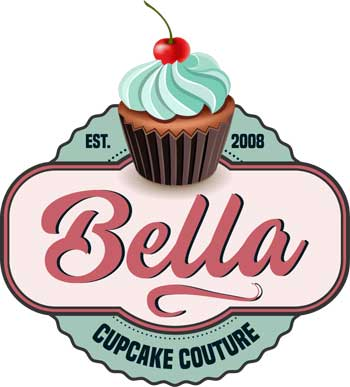
Silicone baking cups, pans, and other kitchen tools equipment are famous for being lightweight and easy to wash. They are slippery and smooth, which may have some people asking, do you have to grease silicone baking cups? In this article, I will tell you why and when you should or should not grease silicone baking cups. You may already know to grease baking cups and pans prevents dough or batter from sticking to the pan or cup. What is the case for baking cups made of silicone? Read on to find out.
Why Use Silicone Baking Equipment?
Before learning whether do you have to grease silicone baking cups, you should know why silicone baking equipment is worth including in your kitchen gear? The use of silicone may put off old-fashioned bakers. Could this thin, flexible material really survive in the oven? Absolutely. What’s more, silicone bakeware can stand high temperatures and still not be hot to the touch. It can withstand temperatures of 400 to 500 Fahrenheit and not warp or deform. This makes silicone it unique compared to glass and metal bakeware.
Also, silicone bakeware’s smooth and flexible material makes it easy to clean and store. Unlike a baking tray or pan, silicone baking cups can easily be stacked and tucked away in the corner of your kitchen cabinet or drawer. Most silicone bakeware manufacturers will claim that there is no need to grease silicone baking cups and molds because food cooked in them can be easily released. So, do you grease silicone cake molds? Let’s find out.
What Sticks to Silicone?
Fats, like oil, butter, and shortening, make food stick to baking pans and molds. This same rule applies to silicone baking cups. You may wonder, when exactly are the times do I grease silicone baking cups? Cookies are unlikely to stick to silicone. Cakes and muffins, however, have a larger chance of sticking to silicone bakeware, especially cups or molds that have ridges. Bits and pieces can get stuck in the grooves despite the smooth material of the silicone.
While a lot of silicone bakeware companies will say no to, “do you have to grease silicone baking cups?”, they are not entirely accurate. It is safer to say silicone baking equipment is stick-resistant than completely non-stick.
Do You Have To Grease Silicone Baking Cups?
Better safe than sorry! The best way to grease a silicone baking cup or mold is first to use vegetable oil, vegetable spray, or a non-stick cooking spray. Avoid using butter. Why? Well, mostly because it is hard to rub a solid stick of butter all over a small baking cup.
Most importantly, do not over-grease! Rub the interior of the baking cups lightly. Working with your fingers will give you much better control, but a pastry brush can be handy as well. Just make sure you get good coverage, especially if your baking cups are not traditional round or square shapes.
My Favorite Banana Chocolate Chip Cupcakes
Now that you have figured out when you need to grease silicone baking cups and how to do so correctly, you can use them with confidence. Try out my method using my favorite cupcake recipe. Have you got overripe bananas? Don’t throw them away just yet! You can transform those bananas into the dreamiest chocolate chip cupcakes using silicone baking cups.
Ingredients
- 1 ¼ cups all-purpose flour
- ½ teaspoon baking soda
- ¼ teaspoon baking powder
- 1 pinch salt
- ½ cup white sugar
- 6 tbsp brown sugar
- ¼ cup unsalted butter and 3 tbsp butter, softened
- 1 egg
- 2 ripe bananas, mashed
- 1/3 cup buttermilk
- ½ cup chocolate chips
- 1 package cream cheese, softened
- 1 tsp vanilla extract
- 2 cups confectioner’s sugar
Cupcakes
- Pre-heat your oven 350 degrees Fahrenheit.
- Lightly grease your silicone baking cups with vegetable oil or spray, or non-stick cooking spray.
- Whisk the flour, baking soda, baking powder, and salt in one bowl.
- In another bowl, combine the white sugar, brown sugar, and ¼ cup of butter. Beat until creamy.
- Beat in the egg, then mix in the mashed bananas.
- Add the dry ingredients to the wet ingredients in three batches, alternating with buttermilk.
- Fold in the chocolate chips.
- Spoon the batter into the baking cups. Place the cups on a sheet tray.
- Bake for 20 minutes. Cool the cupcakes on a wire rack for 30 minutes before removing from the cups.
Frosting
- In a bowl, beat the cream cheese and 3 tablespoons of butter until smooth.
- Add the vanilla extract.
- Beat in the confectioner’s sugar, 1 cup at a time, until the frosting is smooth.
- Spread the frosting over the cooled cupcakes.
Conclusion
Silicone bakeware is convenient to have around, whether you are a first-time baker who does not know what equipment to get or an experienced baker who could use an update on the latest kitchen tools. Either way, you may have wondered, do you have to grease silicone baking cups? The short answer is yes. Typically, baking cups are used for muffins, cupcakes, and other types of food high in fat, which makes them prone to sticking. So, be sure to grease those cups if you do not want your cupcakes to get stuck inside. Get more tips on baking cups.
